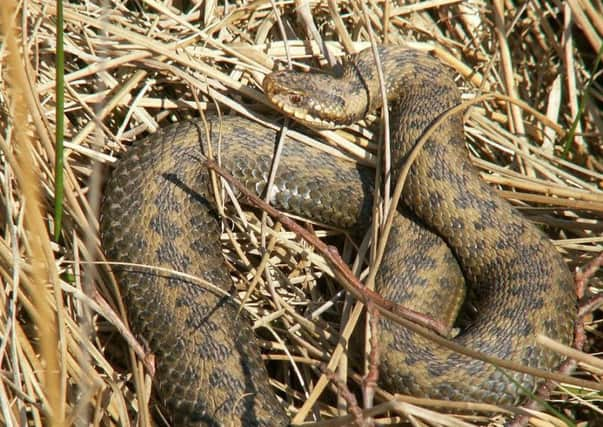Duncan Priddle: Take a trip to see Tolkein-esque beauty and rare wildife


Lying less than 30 miles from the centre of Edinburgh, East Lothian is a great place to go to experience some of Scotland’s most fascinating natural treasures.
The local council has recently launched a series of new guided sightseeing tours for those who would like expert help to spot some of the creatures, plants and geographical features that can be seen there.
Advertisement
Hide AdAdvertisement
Hide AdA day out with the countryside ranger team offers insights into a plethora of species, from seabirds and marine mammals to birds of prey, snakes and insects. and outlines many of the threats they currently face. The tours are focused in and around Dunbar, birthplace of internationally renowned naturalist John Muir.
Visitors will be taken to the harbour to see the renowned kittiwakes, which nest on the ruins of the town’s historical castle. Sadly the chaotic clamours we hear today are just a mere shadow of the hubbub that could once be heard across the town since, along with many of their seabird cousins, the resident kittiwake colony is but a fraction of the size it was even 15 years ago. Rising sea temperatures and consequent changes to fish stocks are seen as the most likely reasons behind the decline.
Moving on from the harbour and its seabirds, not to mention the odd seal, tourers are taken by people carrier to nearby Barns Ness. Here the focus is more on plants and the landscape than wildlife, but your eyes will be opened to a wonderful geological spectacle. The rocks here are conveniently spread out along the coast in chronological order for all to see. It’s a truly fascinating place, with many of the limestone beds replete with fossils of plants and early marine animals. The grasslands at Barns Ness are displaying a palette of summer colour just now, and our guides will explain not only the names of the plants but also, for some, their medicinal and nutritional value. This area is also one of the few locations where you may be lucky enough to catch a fleeting glimpse of a common lizard. Otters can be spied here too when conditions are right.
I’m sworn to secrecy over the location of the next stop on the tour. Suffice to say it is a complete contrast to the previous sites, a sliver of woodland with a Tolkein-esque beauty. The prospect of encountering adders, which are being seen in greater numbers than usual due to the recent warm, sunny conditions, may seem less likely than running into a party of orcs on the march. The oaks here envelop and beguile you. All the more stunning when, on popping out to a nearby high point, you can see the impact of many immediately adjacent in the intensive farmscape either side.
The day finishes at John Muir Country Park, named after the local lad who became known as the father of modern conservation in the US. The final leg of the tour moves back towards the sea, encountering salt marsh plants, various birds, jewelled butterflies and beautiful sapphire damselflies. Then everyone is dropped back in Dunbar town.
At £60 a head, the tours are not cheap, but we believe our experts can provide inspiration for nature-lovers by offering a deeper insight into our plant and animal world. Everyone will also get their own guide to the county’s wildlife to take away at the end of the trip, designed to tempt them back to explore further across the entire calendar year and help them tell their mallard from their merganser.
• Duncan Priddle is an East Lothian Council countryside officer